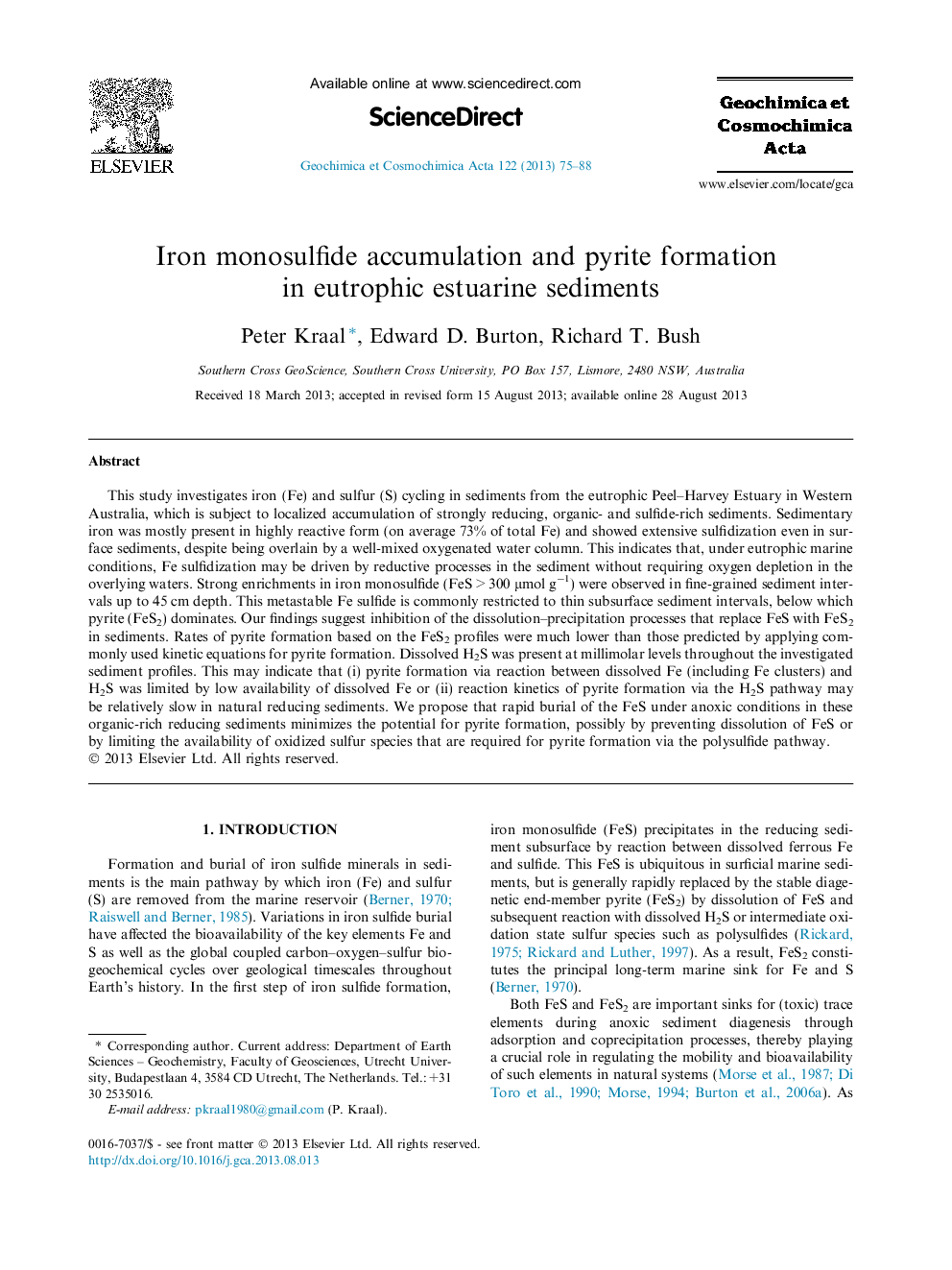| کد مقاله | کد نشریه | سال انتشار | مقاله انگلیسی | نسخه تمام متن |
|---|---|---|---|---|
| 6438798 | 1638035 | 2013 | 14 صفحه PDF | دانلود رایگان |
عنوان انگلیسی مقاله ISI
Iron monosulfide accumulation and pyrite formation in eutrophic estuarine sediments
ترجمه فارسی عنوان
تجمع آهن مونوسولفید و تشکیل پریت در رسوبات یوتوف رسوبی
دانلود مقاله + سفارش ترجمه
دانلود مقاله ISI انگلیسی
رایگان برای ایرانیان
موضوعات مرتبط
مهندسی و علوم پایه
علوم زمین و سیارات
ژئوشیمی و پترولوژی
چکیده انگلیسی
This study investigates iron (Fe) and sulfur (S) cycling in sediments from the eutrophic Peel-Harvey Estuary in Western Australia, which is subject to localized accumulation of strongly reducing, organic- and sulfide-rich sediments. Sedimentary iron was mostly present in highly reactive form (on average 73% of total Fe) and showed extensive sulfidization even in surface sediments, despite being overlain by a well-mixed oxygenated water column. This indicates that, under eutrophic marine conditions, Fe sulfidization may be driven by reductive processes in the sediment without requiring oxygen depletion in the overlying waters. Strong enrichments in iron monosulfide (FeS > 300 μmol gâ1) were observed in fine-grained sediment intervals up to 45 cm depth. This metastable Fe sulfide is commonly restricted to thin subsurface sediment intervals, below which pyrite (FeS2) dominates. Our findings suggest inhibition of the dissolution-precipitation processes that replace FeS with FeS2 in sediments. Rates of pyrite formation based on the FeS2 profiles were much lower than those predicted by applying commonly used kinetic equations for pyrite formation. Dissolved H2S was present at millimolar levels throughout the investigated sediment profiles. This may indicate that (i) pyrite formation via reaction between dissolved Fe (including Fe clusters) and H2S was limited by low availability of dissolved Fe or (ii) reaction kinetics of pyrite formation via the H2S pathway may be relatively slow in natural reducing sediments. We propose that rapid burial of the FeS under anoxic conditions in these organic-rich reducing sediments minimizes the potential for pyrite formation, possibly by preventing dissolution of FeS or by limiting the availability of oxidized sulfur species that are required for pyrite formation via the polysulfide pathway.
ناشر
Database: Elsevier - ScienceDirect (ساینس دایرکت)
Journal: Geochimica et Cosmochimica Acta - Volume 122, 1 December 2013, Pages 75-88
Journal: Geochimica et Cosmochimica Acta - Volume 122, 1 December 2013, Pages 75-88
نویسندگان
Peter Kraal, Edward D. Burton, Richard T. Bush,
